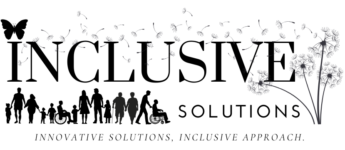Diversity, Equity, and Inclusion (DEI). You see it on plenty of websites these days—sometimes its own dedicated page, other times just a line in a mission statement. But here’s the question: how effective are these sections, really? Do they move the needle, or are they just a checkmark in the “we care” box?
Let’s break it down.
DEI Needs to Be More Than Just Words
We’ve all seen those vague, fluffy statements that go something like, “We celebrate diversity and promote inclusion in all that we do.” Cool, but what does that mean? How does your company celebrate diversity or foster inclusion? Are there examples of how you’ve supported marginalized communities?
Without actions to back it up, a DEI statement can feel hollow, even performative. Visitors to your site—especially people directly affected by these issues—can spot that lack of authenticity a mile away. They’re looking for signs that your business walks the talk.
Actions Speak Louder Than Buzzwords
If your DEI initiatives are real and ongoing, let people know! Share stories, highlight employees, or talk about partnerships that promote inclusivity. For example, if you’ve partnered with a program to help underrepresented entrepreneurs, shout it out. If you’re providing accommodations for staff with disabilities, that’s worth mentioning. You shouldn’t be humble in business; you should be transparent. Let people know what you’re up to when you’re doing good works!
When businesses share concrete steps they’ve taken, it builds trust. People want to work with companies that reflect their values. But if all they find is a page full of corporate jargon, they’re probably not sticking around.
What Does “Inclusive” Even Mean on Your Website?
A lot of companies miss an obvious part of inclusivity—the website itself. If someone with a screen reader, a mobility impairment, or even limited internet bandwidth visits your site, can they easily access it? It’s ironic how many businesses boast about their DEI efforts but have sites that are anything but inclusive.
Simple tweaks like alt text for images, clear navigation, and captions on videos make a world of difference. Accessibility isn’t a “bonus” feature. It’s a necessity if you want people to believe you’re serious about inclusion.

Don’t Just Say It—Live It
If you’ve got a DEI page on your site, make sure it’s not static. Update it regularly. Share progress and setbacks. Let your audience see that you’re committed to continuous improvement. Authenticity is all about transparency, and that goes for your DEI efforts too.
Also, DEI shouldn’t live in isolation on your site. It should flow through every section—your “About” page, your job postings, and even your services. Show that diversity and inclusion are part of your DNA, not just a trendy buzzword.
The Business Case for DEI
Here’s something I’ll say for the skeptics: DEI isn’t just about being a good person. It’s good business. Research shows that diverse teams perform better, foster more innovation, and understand customer needs more deeply; not to mention are statistically shown to bring in higher profits! When you embed those values into your company culture and communicate them well, you’re more likely to attract both top talent and loyal customers.
Final Thoughts
DEI sections on websites can be powerful when done right—but only if they reflect genuine, ongoing efforts. People want to see companies that care about making a real impact, not just paying lip service to social issues. So if you’ve got a DEI section, make it count. Show us what you’re doing and why it matters.
Remember, it’s not about perfection. It’s about progress—and the willingness to keep improving.
What do you think? Does your DEI page show your commitment, or is it time for a refresh?
